Whether you’re ready to get started or would like to know more, we’re here to help.
By Alexandra Lawrence, carsales.com.au
Toyota has been pushing the barrow for hybrid technology almost on its own for nearly 30 years now. And now it is pushing the boundaries of small soft roaders – a category it also invented with the original RAV4 back in 1994 – with the second-generation of its funky C-HR, which becomes the latest model line to move to a hybrid-only range.
Now built in Turkey, the all-new C-HR introduces a striking new design, more infotainment and safety technologies and a significantly higher entry price, by around $11,000.
For some, that will be hard to look past. But there’s plenty of other reasons why the C-HR can’t be ignored. Here’s why.
How much does the Toyota C-HR cost?
Toyota has repositioned the second-generation C-HR as a premium small SUV, with a price to match.
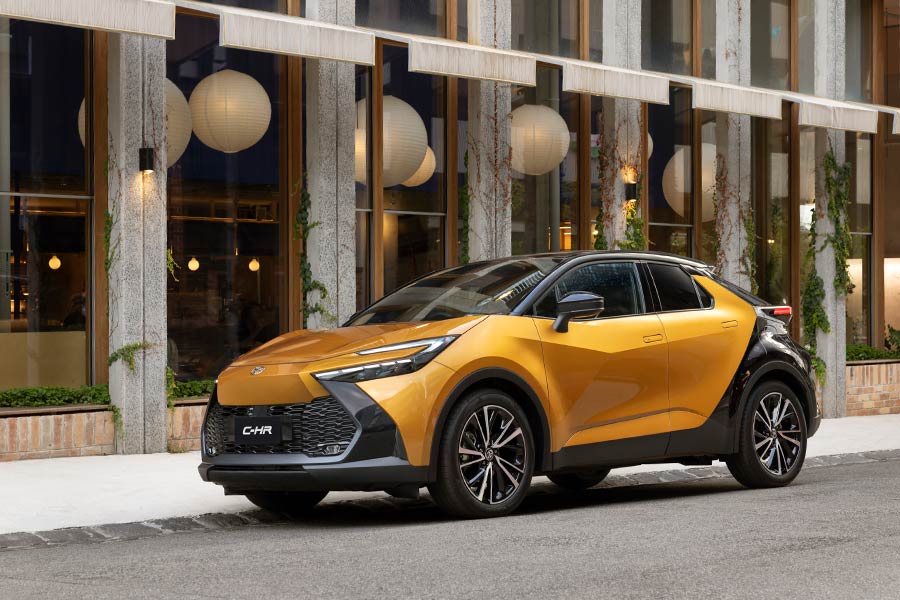
Where the original model arrived to fill a void below the RAV4 that has grown with every model upgrade, that entry-level city-sized position has since been filled by the Yaris Cross, leaving the C-HR in no-man’s land…until now.
By virtue of the fact that Toyota has decided to only offer the second-gen model exclusively powered by a hybrid powertrain (while also announcing similar plans for the Corolla hatchback, Yaris city car and Camry sedan), entry into the C-HR line-up has increased by more than $10,000 over its predecessor.
The Japanese brand has also expanded the model line-up too, increasing the variants from two to three, starting at $43,000 plus on-roads for the base-model GXL, rising to $49,990 (plus ORCs) for the mid-spec Koba and topping out at $54,990 (plus ORCs) for the flagship GR Sport.
That puts a large wedge between the C-HR and key rivals like the Mazda CX-30 (from $33,140 plus ORCs), Hyundai Kona (from $32,000 plus ORCs) and Volkswagen T-Roc (from $39,790 plus ORCs).
But Toyota does have other options for small SUV shoppers with the Corolla Cross range retaining the choice of petrol and hybrid models (from $33,890 to $50,030 plus ORCs).
Toyota expects the vast majority of buyers (about 70 per cent) to choose the mid-spec Koba variant, with 20 per cent stumping up for the GR Sport and just 10 per cent opting for the base GXL.
Importantly, a long list of standard equipment on all grades makes those prices a little more palatable.
What equipment comes with the Toyota C-HR?
Even at base level, the 2024 Toyota C-HR GXL is fitted with 17-inch alloy wheels, LED headlights and daytime running lights (DRLs), heated exterior mirrors, keyless entry with push-button start, rain-sensing wipers, and dual-zone climate control.

The Koba we’re testing here gets larger two-tone 19-inch alloy wheels, bi-LED headlights with auto-levelling, LED front fog lamps, cornering lamps, a powered tailgate, unique front grille, tinted rear windows, sporty fabric/suede-like front seats with heating, ambient interior lighting, and a powered driver’s seat with memory.
The flagship GR Sport brings the only major mechanical upgrade with all-wheel drive, as well as adding gloss black 19-inch alloys, a GR Sport grille, black exterior trim details, leather-appointed/suede-like sports seats, a heated steering wheel, alloy scuff plates and GR Sport floor mats.
The GXL is available in six colours: Glacier White, Frosted White Pearl, Graphite metallic, Stunning Silver metallic, Ink mica metallic and Emeraldine mica metallic, while the Koba or GR Sport can also be optioned with a striking two-tone paint scheme.
Toyota charges an additional $775 to paint the roof black, while you can opt for that gloss black paint to be extended to the rear half of the car for an additional $1550.
Tick the options box for a panoramic roof (which automatically comes with the two-tone paint scheme) and it’ll be another $1150.
All C-HR models are backed by Toyota’s five-year/unlimited-kilometre warranty, with capped-price servicing offered during the first five years (or 75,000km) at $200 per service – due every 12 months or 15,000km.
What technology does the Toyota C-HR feature?
There is value in the price rise for the 2024 Toyota C-HR as all models come equipped with an array of new technologies and conveniences.
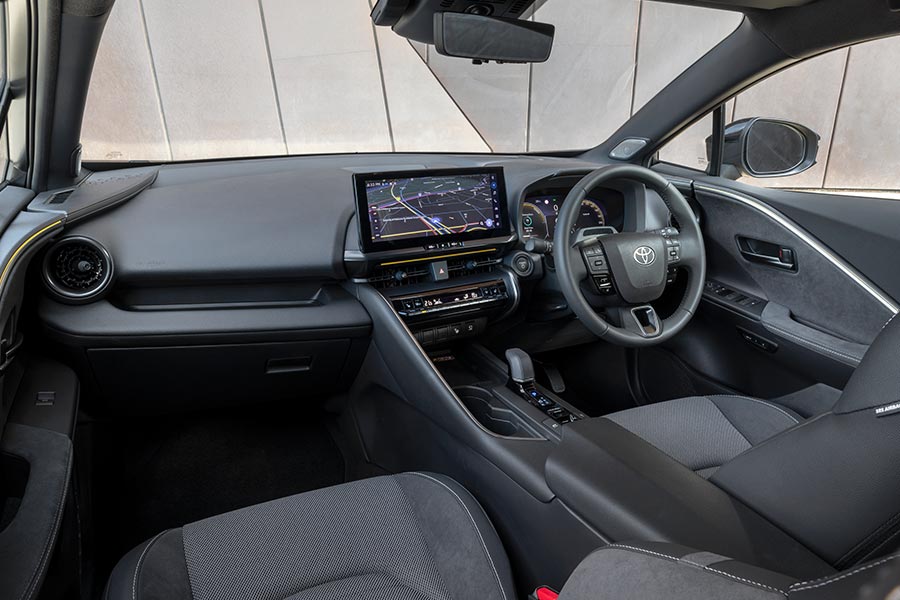
A larger 12.3-inch touchscreen is standard across the range, bringing embedded and cloud-based navigation, Android Auto, wireless Apple CarPlay, Bluetooth, and digital radio.
The infotainment system is intuitive and easy to use, while physical climate control buttons are situated on a control panel just below, making adjustments on the move simple to execute.
The driver is also treated to a fully digital instrument cluster, while the sound system varies from a six-speaker unit in the GXL to a premium nine-speaker JBL system in Koba and GR Sport.
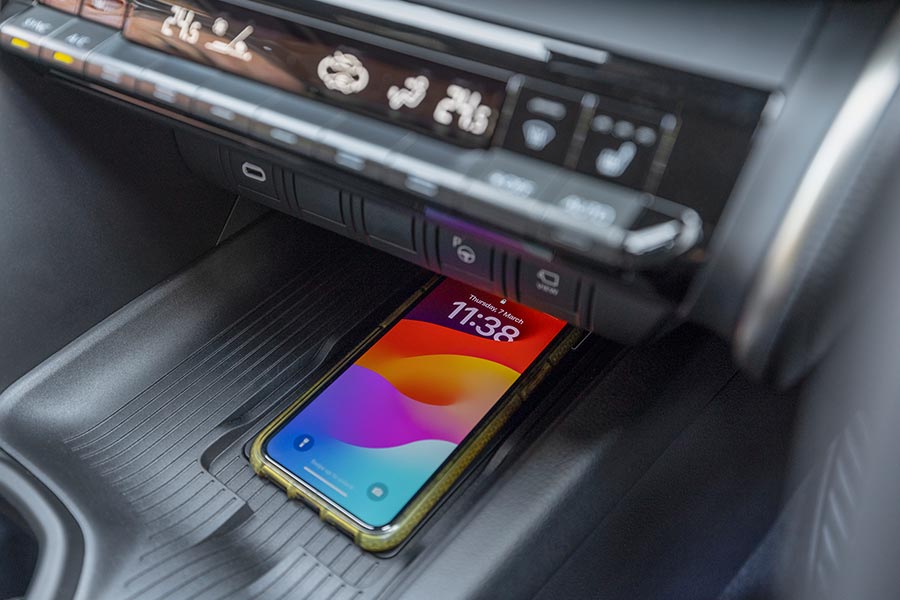
Koba and GR Sport also feature a wireless phone charging pad, along with a digital rear-view mirror – as seen in the larger RAV4 – which comes in handy if you managed to squeeze three adults into the rear seat and can’t see out the small rear window.
Toyota Connected Services also makes its way into the C-HR for the first time, offering a free 12-month subscription (then from $9.95 per month). It brings the ability to connect your vehicle via your smartphone to access real-time information such as fuel level, vehicle location, and more.
What is the Toyota C-HR like inside?
The original Toyota C-HR introduced a new exterior design language from Toyota which wasn’t reflected very well in the cabin. It looked both fussy and out of date.
But the new model changes that with an interior design that is simpler and more modern, which helps with the premium vibe.
In mid-spec Koba trim, the door cards feature soft suede-like inserts – even if the top half is still hard plastic – and the leather-appointed steering wheel feels lovely underhand. The smaller gearshift makes the cabin feel more spacious and there are plenty of storage options up front.
For those hopping out of a first-gen C-HR, the steering wheel is just as busy and button-heavy as before, but it’s now laid out in a simpler fashion that makes it easy to navigate.
A larger central touchscreen and fully digital instrument cluster moves the new C-HR along, while the addition of connected services will be a win for tech-heads.
As before, the second row is a tight fit for adults and is best left to children or small teenagers. A pair of adults in the outboard seats should be fine on shorter trips, however the curving roofline hinders headroom, and there’s very little in the way of amenities.
There’s no centre arm rest or air vents and only a single USB-C port is provided at the rear of the centre console of the Koba and GR Sport (not on GXL). The rear door pockets really only have room for a small cup.
Likewise, if you’ve got taller people in the front row, you’ll struggle for legroom in the rear seat.
Meanwhile, the front-wheel drive Koba tested here offers a decent 388 litres of boot space (or 1155L with the rear seat folded), while the GR Sport AWD offers 362L (extending to 1134L).
How safe is the Toyota C-HR?
Similarly, the new-generation 2024 Toyota C-HR receives a significant upgrade in safety equipment over its predecessor.
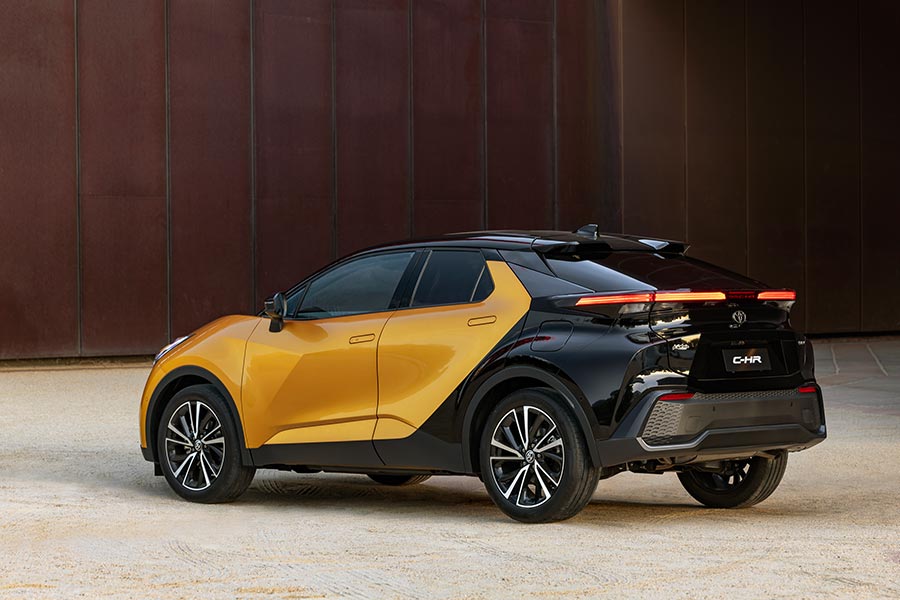
All three model grades are equipped with autonomous emergency braking (AEB) with detection for pedestrians, motorcyclists, and cyclists (daytime only), as well as oncoming vehicles at intersections.
There’s also rear cross traffic alert, blind spot monitoring, a driver fatigue monitoring system, lane trace assist and departure warning, emergency steering assist, speed sign recognition, safe exit assist, parking sensors at both ends, a panoramic view monitor and park assist.
Adaptive high beams are fitted to the Koba and GR Sport, leaving the GXL with a less-advanced (but still handy) automatic high-beam set-up.
The adaptive cruise control system now brings four pre-set following distances, up from three, while the upgraded AEB camera system is said to have a wider and deeper range of collision detection.
In the event of a collision, there are 10 airbags protecting the vehicle occupants.
The new C-HR is yet to be crash-tested by either Euro NCAP or ANCAP, but a maximum five-star safety rating is expected.
What powers the Toyota C-HR?
There are two powertrain options in the hybrid-only 2024 Toyota C-HR range, both of which utilise Toyota’s latest fifth-generation hybrid technology.
Entry-level GXL and mid-spec Koba grades are fitted with a revised version of the front-wheel drive 1.8-litre petrol-electric set-up used in the first-generation C-HR, albeit with a range of upgrades said to make it more efficient and powerful.
Meanwhile, the GR Sport gets a more powerful 146kW (peak combined) set-up, made up of a 2.0-litre four-cylinder petrol engine and a pair of electric motors. It’s also the only C-HR variant to get Toyota’s eFOUR all-wheel drive system.
In the Koba tested here, peak combined power is 103kW, courtesy of its 72kW/142Nm (at 3600rpm) 1.8-litre four-cylinder petrol engine and front-mounted 70kW electric motor.
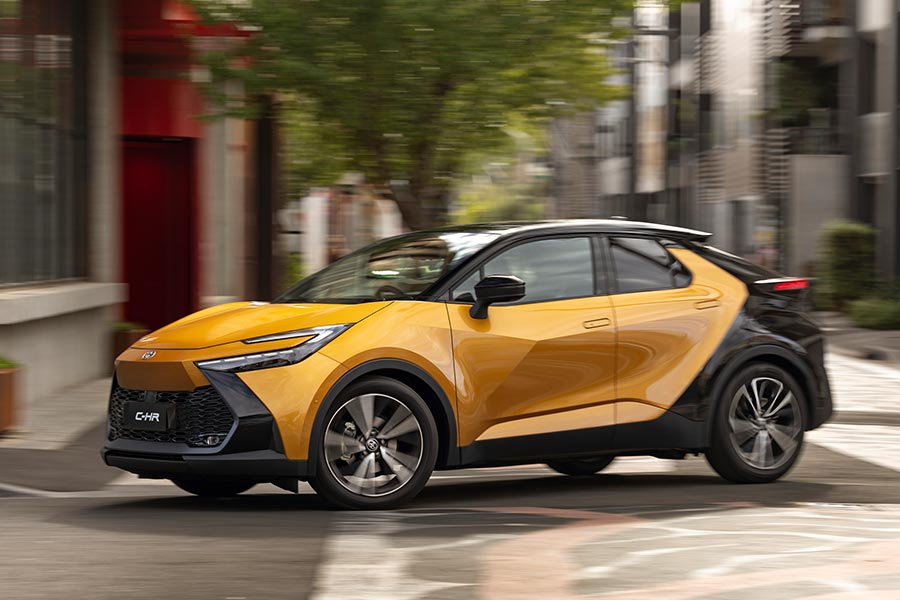
Of the upgrades, Toyota details a smaller and lighter hybrid transaxle in GXL/Koba which it claims offers improved noise, vibration, and harshness (NVH) levels, while the petrol 1.8-litre has been “thoroughly refined”.
Both powertrains now use a lighter lithium-ion battery in place of the first-gen C-HR’s nickel-metal hydride battery, and every C-HR is fitted with a continuously variable transmission (CVT).
There’s a plug-in hybrid version of the C-HR in Europe, but it’s currently not on the agenda for our market. Toyota Australia’s vice-president of sales and marketing, Sean Hanley, said that if demand is high enough, the company will consider bringing the PHEV here.
How fuel efficient is the Toyota C-HR?
There’s surprisingly little benefit with the hybrid system when it comes to fuel consumption for the new Toyota C-HR.
Both front-wheel drive versions have a claimed average consumption figure of 4.0L/100km, which is respectable but only 0.3L/100km better than the non-hybrid model it replaces.
The GR Sport, which is heavier because of its additional electric motor on the rear axle, has a claimed average consumption of 4.1L/100km.
We struggled to match those numbers in the real world during our first test drive, recording as low as 4.9L/100km in the Koba after a mix of city and rural driving and 5.3L/100km in the GR Sport over a similar drive loop.
While each C-HR variant comes with an array of drive modes (Normal, Eco, Sport and Custom), there’s also an EV ‘drive mode’ – as with other hybrid models from Toyota – but it’s only for low-speed use. Punch the accelerator and the petrol engine immediately kicks in.
What is the Toyota C-HR like to drive?
Like Goldilocks’ choice of porridge, the mid-spec Toyota C-HR Koba is the sweet spot in the range for value. But the GR Sport has a Papa Bear personality that might be more attractive to driving enthusiasts.

Make no mistake, the GR Sport is six litres short of being a supercar, however a brief stint through some winding country roads revealed a charming little machine with more than enough dynamic talent for a mainstream small SUV.
It’s agile and easy to wrangle, but you need to work its hybrid powertrain hard to get things moving.
On the other hand, the smaller 1.8-litre petrol-electric powertrain in the Koba feels better suited to city driving. It’s not sluggish per se but you wouldn’t necessarily call it zippy either.
Challenge it with some high-speed cornering and the C-HR Koba holds up surprisingly well, even without the surety of the GR Sport’s all-paw grip. Throw it into a corner and it’s just as confident, thanks in part to Bridgestone Turanza rubber that provides plenty of grip.
While it feels more than capable of tackling a spirited country road, the C-HR Koba runs out of puff quickly and you don’t have to worry about potential wheelspin when you pin the throttle from a standstill; its lack of power prevents any such chaos.
In terms of the ride, all C-HR models steer towards the firmer side of the comfort corridor, with taut suspension that creates a generally sporty feel, while still offering decent compliance over bumps.
The steering is light yet direct, but you can make it more meaningful by flicking to Sport mode to stiffen it up (while also improving throttle response) if you so choose.
No matter which C-HR you’re driving, the CVT automatic ensures the engine drones at constant revs, which only gets louder under load. In a cabin with no music or chatter, it’s all you’ll hear most of the time, even with decent sound insulation that otherwise does a great job of shielding passengers from road noise.
Based on a revised version of Toyota’s TNGA-C platform, the new C-HR is 4362mm long, making it 28mm shorter than before, but the wheelbase remains at 2640mm. It’s also 37mm wider than its predecessor.
As with the first generation, the C-HR’s small stature makes it easy to place on the road and a breeze to manoeuvre around town, even if rearward vision is compromised by the tiny rear window and think C-pillars.
Should I buy a Toyota C-HR?
There’s no doubt the 2024 Toyota C-HR is much improved over the car it replaces.
It’s smarter and safer, arguably looks cooler – or at the very least, more futuristic – and brings improved fuel efficiency thanks to Toyota’s latest battery-electric technology.
But all that comes at a huge cost, and there are plenty of alternatives that either offer more bang for your buck in terms of space and performance or simply cost less while being just as (if not more) enjoyable to drive.
2024 Toyota C-HR Koba at a glance:
Editor’s Rating: 7.3/10
| Price: $49,990 (plus on-road costs) |
Transmission: Continuously variable automatic |
| Available: Now |
Fuel: 4.0L/100km (ADR Combined) |
| Powertrain: 1.8-litre four-cylinder petrol-electric |
CO2: 89g/km (ADR Combined) |
| Output: 72kW/142Nm (electric motor: 70kW/185Nm) |
Safety Rating: Not tested |
| Combined output: 103kW |
Disclaimer: Images supplied by Toyota Australia.
This article was prepared by an independent author. The information contained in this article represents the views and opinions of the original author, and is based on research carried out by the original author. The appearance of the article on Maxxia's website does not constitute an endorsement of its content by Maxxia in any way. The article has been made available for informational purposes only and should not be taken as advice. While all reasonable care has been taken to ensure that the statements made by the original author in the article are fair and accurate, Maxxia does not guarantee or warrant the accuracy or completeness of this information and will not be liable for, or in connection with, any loss or damage suffered as a result of any inaccuracies, errors or omissions or your reliance on this information. You should independently research and verify information before making any decision in respect of a vehicle.

